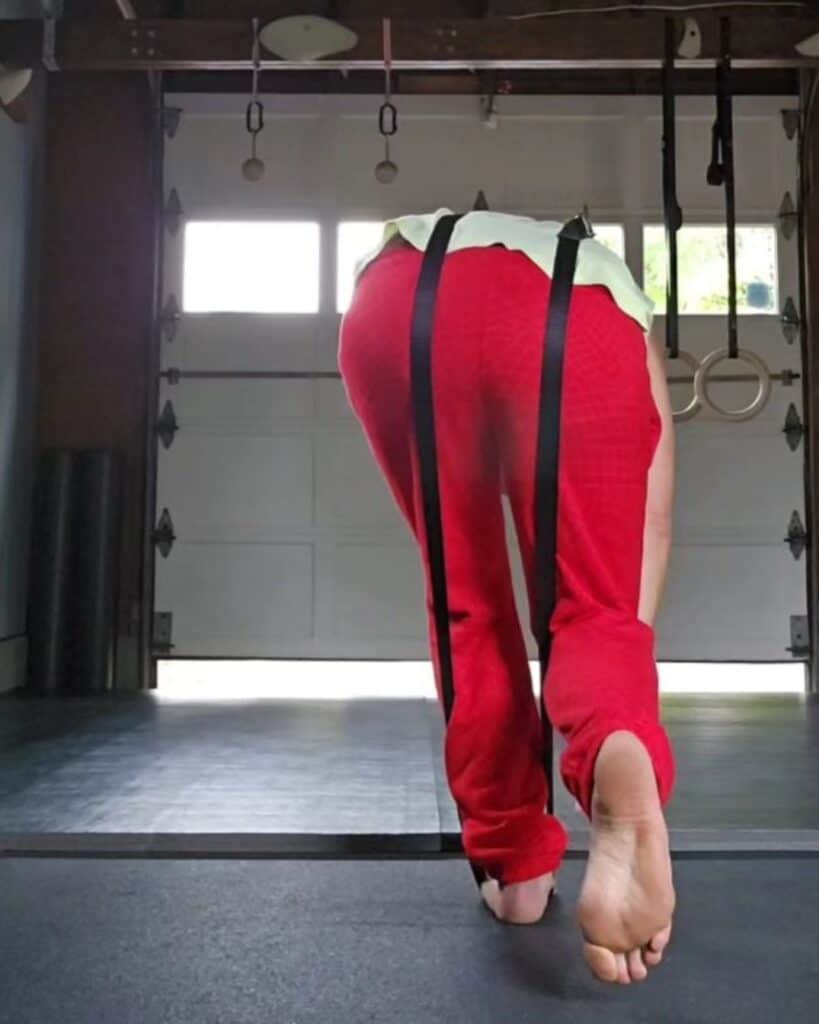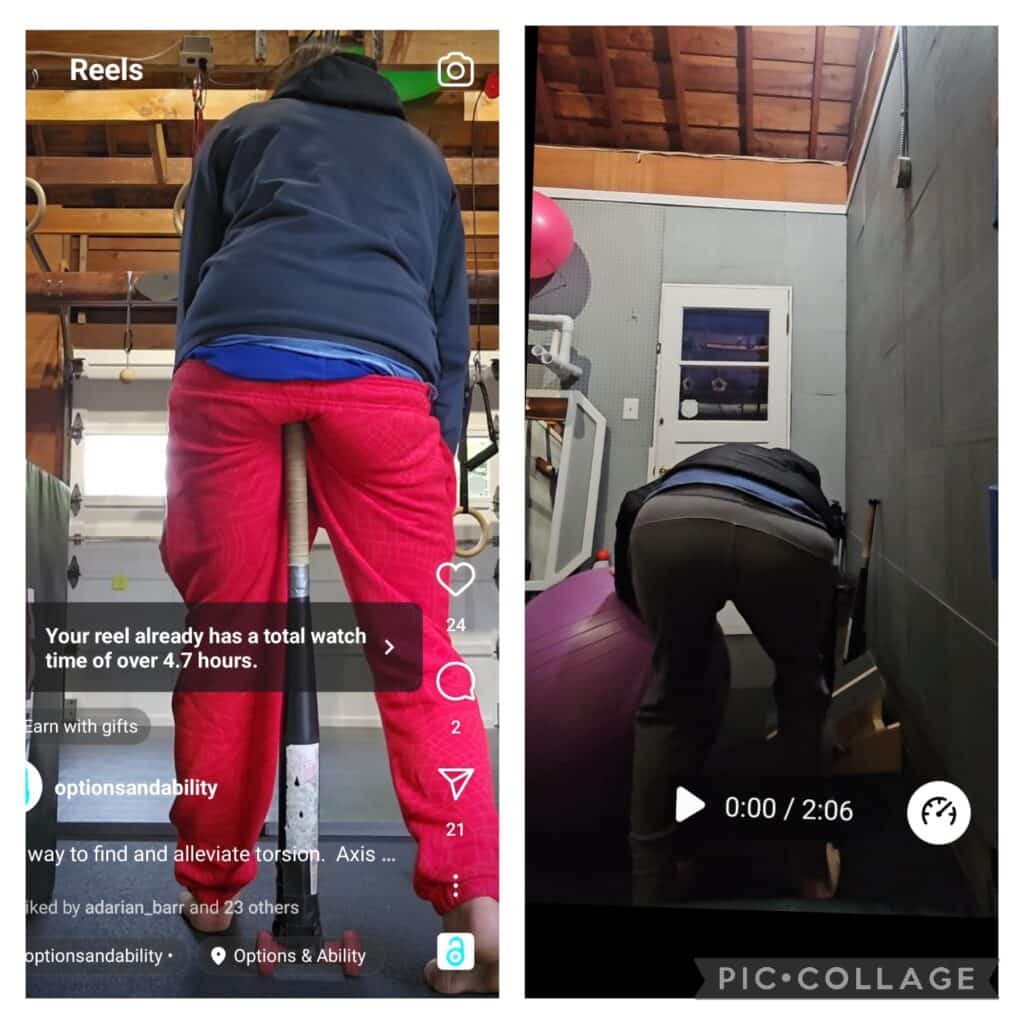
The Pelvic Floor and its Relation to the Tensioning System
Part One of this series looked at how taboos with genital region issues normalize them.
Part Two investigated how anatomy shapes action.
This third and final installment hopes to outline some systemic patterns that might feed into pelvic floor dysfunction. I took particular care to not force a connection between what was seen and what it means, especially when there is a central issue in place. When we take observations and place causation on them, we begin to tell a story, and start to become beholden to that story. Evidence is gathered to fit a narrative, which is much different than simply gathered.
I intend to be critical with each examination, and leave them as stand alone considerations to further investigate. Rather than weave them into a terminating conclusion, I wish to leave them independently germinating, and attempt to link them after additional questions are answered.
Observation #1: The halves load differently when standing vs. sitting.
“When standing, I tend to load my left side. When sitting, I tend to load the right.”
A weight shift occurs.
But why the discrepancy? What is it about the tensegrity of middle-trunk-core that flips when the limbs are being loaded/ leveraged?
Deeper Understanding Needed #1: Psoas-QL relationship
View this post on Instagram
Deeper Understanding Needed #2: The relation of the psoas to the diaphragm (and the postural tie in to breathing.)
Observation #2: Right-Oriented
“My ribs tend to twist to the right.”
The right side ribs pull back, which mirrors the ‘start-to-run’ position of my hips.
This tensioning sets up slings that pull the right hip forward when running.
But why is the system set up this way? And why doesn’t the right side do the same for the left?
Deeper Understanding Needed #1: How does this twist or yaw fit into other directions of movement, such as pitch or roll?
Deeper Understanding Needed #2: How does this tendency affect that halves ability to ground or push down?
Observation #3: The left pelvis sits higher than the right when hinging, squatting, or folding
Random snapshots while doing very different things:

 My left leg is my up leg, and my right leg is my down leg. My up arm and down arms match my legs, meaning my entire right side leverages down, and my left side lifts up.
My left leg is my up leg, and my right leg is my down leg. My up arm and down arms match my legs, meaning my entire right side leverages down, and my left side lifts up.
Deeper Understanding Needed #1: How is the trunk/ innards organized to establish such patterns?
Deeper Understanding Needed #2: How do the roles of the halves feed into pressurization issues?
Observation #4: Relatively Tight Upper Half
“My jaw tends to clench. Though my neck is mobile it still has consistently tight sections. My ribs, though improving, have a rigid quality to them, especially when I’m stressed.”
If my torso is a cylinder of pressure, and the top is held in a squeezed position, will it force everything, including fluid (including pee), downward?
Deeper Understanding Needed #1: What is lacking in the integrity of the middle that a distal end would tighten?
Deeper Understanding Needed #2: How does the coordination of the muscles attached to the ribs relate to breathing deficiencies?
Observation #5: Pelvic Tilt Getting Stuck in Extremes
My history of low back and hamstring issues made me quite proficient at posterior pelvic tilting. I had been stuck in anterior tilt, and being able to reside in the opposite cleared things up for a long time. Any existence on one end of the spectrum, however, voids the swath of competence of settling into any and all positions that occur in between.
“I struggle to anteriorly tilt my pelvis, particularly on the left side.”
View this post on Instagram
Deeper Understanding Needed #1: How does the pelvis’ ability to twist relate to what is happening at the pelvic floor?
Deeper Understanding Needed #2: What dictates how stable or mobile a pelvis should be?
Observation #6: Avoidance of Pelvic Pressurizing
“When sitting, my pelvis would rather move instead of load.”
One of the downfalls of having a relatively mobile pelvis. My ribs are used to positioning themselves (and being stable enough) to bear the weight of my system. I struggle to ‘stack’ properly because of this, and find the ‘resting’ lines to push down on that reflexively hold me up. I am in the process of ‘switching anchors’ but it is a long and tedious one. If my pelvis can’t load, I have great difficulty feeling what my pelvic floor is doing, and if I can’t sense it, I’m really just guessing. When standing, so much is going on in my foot through lower leg and hip that it is hard for me to differentiate what the pelvis is doing at all.
Deeper Understanding Needed #1: What exactly does pressuring the pelvic floor feel like?
Deeper Understanding Needed #2: How can I use the squat to form a baseline of pressurizing the pelvic halves?
Feature Photo by Ed Stone on Unsplash.



